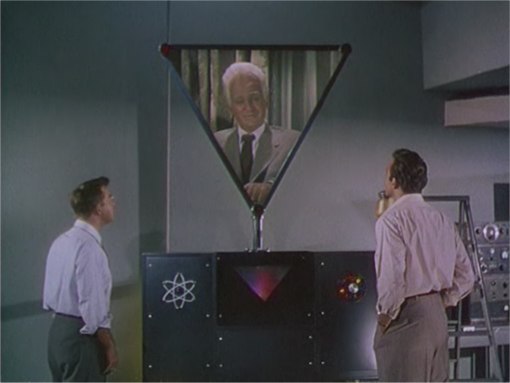
The ECM15P

The EneCapTen large capacitor

The electrochemical difference between EDLC and Lithium Ion Capacitors

The ACT Premlis LIC compared to EDLCs and Lithium-ion batteries.
Posted on 01/05/2009 1:53:39 PM PST by Red Badger
FDK Corp. will begin mass production of its line of lithium-ion capacitors (LIC) as early as spring. The company will install new production lines at its factory in Kosai, Shizuoka Prefecture, with a gradual expansion in monthly output capacity to 500,000 units, according to a report in the Nikkei. FDK plans to invest ¥2-5 billion (US$21.7-54.2 million) by the end of 2012.
FDK announced its EneCapTen lithium-ion capacitor in 2007. The EneCapTen performs well under high temperatures (up to 80 °C); offers a maximum cell voltage of 4.0V; maximum capacitance of 2,000F; and an energy density of up to 25 Wh/L (14 Wh/kg)—3-4 times that of FDK’s older electric double-layer capacitor (EDLC).
The company anticipates that lithium-ion capacitors will be in demand as auxiliary power units for automobiles, as well as storage components that facilitate the transmission of electricity generated by wind turbines.
In 2008, the company introduced the ECM15P series EneCapTen ultracapacitor modules for use in vehicles at ELECTRONICA 2008. (Earlier post.)
FDK’s 15V ultracapacitors are modularized versions of its original high-capacity EneCapTen capacitor cells for vehicle use. These capacitors have a long cycle life of more than 500,000 cycles, a high power density relative to batteries, and an efficiency rating of 99.9%. At 260x210x60mm in size, they have 525F of capacitance, 10.5 Wh of energy capacity, and 5 kW of maximum power.
Among the applications for the modules suggested by FDK are use in a stop-start system which can regenerate electric power during deceleration or use to extend the product life of lead-acid or lithium-ion batteries.
Lithium-ion capacitors. Capacitors are characterized by very long cycle life, high power density and instantaneous charge and discharge, but with low energy densities. Lithium-ion capacitors improve on the energy density and voltage of a conventional EDLC by using a lithium-ion pre-doping technique to increase the capacity and lower the potential of the anode, as well as a lithium electrolyte.
At the 214th Meeting of the Electrochemical Society in October, researchers from Yamaguchi University noted in a paper that because lithium-ions in a LIC do not behave exactly similar to those in lithium-ion batteries, the design of the electrolyte, including the selection of the anion, is important for the further improvement of the system. They presented a preliminary study on the used of a series of mixed-salt non-aqueous electrolytes, in particular containing a lithium triazolate salt.
JM Energy Corp., began mass production of lithium-ion capacitors this past fall with monthly output capacity of 25,000 units. The JM Energy LICs—the company is introducing two series initially based on capacitance (1,100F and 2,200F)—offer volumetric density of 21-25 Wh/L, and gravimetric density of 12-14 Wh/kg.(Earlier post.)
Fuji Heavy Industries (FHI), the manufacturer of Subaru vehicles, is in the middle of a five-year agreement to license its lithium-ion capacitor technology to Nihon Micro Coating. (Earlier post.)
Under the agreement, Nihon Micro Coating will non-exclusively be able to develop, prototype, manufacture, use, and market lithium-ion capacitors based on FHI’s technology. The company had been producing the electrodes for the capacitors. Fuji Heavy is exploring their use in hybrid and electric vehicles.

The ECM15P

The EneCapTen large capacitor

The electrochemical difference between EDLC and Lithium Ion Capacitors

The ACT Premlis LIC compared to EDLCs and Lithium-ion batteries.
Flux Capacitor ping!..........
Even better. These are the ones they use on the Ion Cannons on Imperial Cruisers. I’m talking about the big Correlian ones. Not the local bulk ones.
I remember thinking, in my first electronics class that the Farad was the most ridiculous unit of measurement I’d ever encountered. You never measured capacitors in farads, but in thousandths or millionths of a farad! (microfarads, milifards, picofarads...)

if i hook it to my flux capacitor will my car fly or explode?
And can a bank of these in the back of a pickup power a tactical anti-missile laser yet?
New batteries for hybrid cars? Military?
Now, if we could just get it to generate 1.21 jigawatts...

"Hey, it's that guy from CNN!"
(actually I'm still waiting for some bead condensers, model #: AB-619, and my intensifier disk is cracked)
You ought to look at Curies and Becquerels in the radiation field for nutso numbers.
Those suckers have “do not lick” written all over them.
Surprisingly, it usually works!
2K Farads...that’s one big freakin’ cap! I remember as an exercise in my 2nd semester of physics at Penn State the prof had us calculate the size of the two plates for a 1 farad parallel plate cap...if I remember correctly the two plates each were around the size of an acre! The biggest caps that I ever use in any of my designs never exceed 10uF.
A mechanical engineer buddy of mine refers to every electrical characteristic (amps, volts, power, amp-hours, etc.) as a kilowhickle. Kind of a universal electical rating, for ANYTHING with a piece of wire connected to it.
This sounds like rail gun territory.
Yowza, two kilofarads. But will it store flux?
Yes.
This is the US, speak English, dammit!
Will some electrical genius translate this into how big a car, how fast a car, how long it will go on a charge, how much it will cost, and what does it weigh, and how many do you need.
Next question, compare it to the energy densities of lead acid, and nicad batteries.
Last question, how exciting will it be if you get a short in the battery system
Disclaimer: Opinions posted on Free Republic are those of the individual posters and do not necessarily represent the opinion of Free Republic or its management. All materials posted herein are protected by copyright law and the exemption for fair use of copyrighted works.